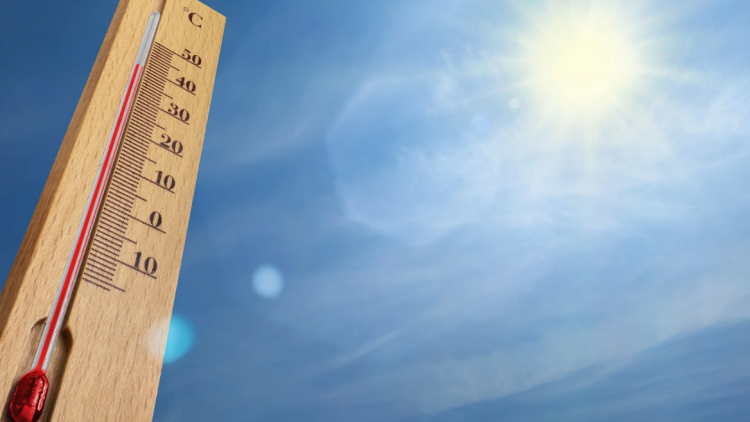Summers in Canada are getting hotter, and more unpredictable. What used to be a nice break from school and a chance to enjoy the outdoors has become a season marked by droughts, heat warnings, sudden flooding, and wildfires (with smoke that pollutes the air). These are becoming a growing pattern driven by climate change. Environment and Climate Change Canada scientists analyzed the heat waves that impacted Canadians in the summer of 2024. They found that human-caused climate change made almost all of Canada's worst heat waves hotter and more likely to occur (Environment and Climate Change Canada). The climate-driven extremes of heat, smoke, drought, and floods not only threaten nature, but also puts infrastructure and lives at risk. Nevertheless, these growing risks also offer an opportunity for everyone, especially young people, to learn, prepare, and design solutions.
Taking Action to Combat Extreme Heat
Heat waves are becoming a regular and dangerous part of Canadian summers, driven by a warming climate. Long periods of extreme heat can worsen the air quality, pose serious health risks, and put a strain on energy systems. For schools, this can mean reduced outdoor learning time, overheated classrooms, and pressure to adapt buildings and schedules to the new realities of the climate. Responding to extreme heat requires both short and long-term strategies, such as ensuring access to shaded places, encouraging hydration, and investing in greener urban spaces that naturally lower temperatures. The United Nations Office for Disaster Risk Reduction has compiled a list of actions that can help combat extreme heat. Learning about the science of heat and its impacts empowers students to take action. With support, students can lead change in their schools and communities.
The Greening Your Schoolyard Simulator empowers learners to explore real world climate solutions by reimagining school grounds to better manage flooding and extreme heat.
Learn about Wildfires with eCards
2024 was the sixth-most destructive season for wildfires in Canada on record, with over 5.3 million hectares of land being burned according to the Canadian Climate Institute. Wildfires in Canada have become more frequent and intense in recent years. Hotter temperatures, earlier snowmelt, and drier landscapes (all linked to climate change) are contributing to more frequent and intense wildfires.. These fires not only destroy forests and wildlife habitats, but also affect human health, by filling the air with smoke and reducing air quality, even in areas far from the actual flames. For students and educators, wildfires are not only a climate concern but also a learning opportunity. Understanding what can cause them, how quickly they spread and how they can be prevented or better managed is crucial for building climate resilience. GreenLearning’s eCards Wildfires Backgrounder introduces learners to the science behind wildfires, the environmental risks, and how communities and governments can work to reduce destruction while also supporting the health of ecosystems.
Create Resilient Schoolyards and Communities
As the climate warms, heavy rainfall events are becoming more intense and frequent which often overwhelms stormwater systems and in turn leads to flash flooding. Runoff from paved surfaces can erode soil and harm local waterways. Flooding is damaging infrastructure, wrecking homes, and disrupting people’s daily lives. Schools and communities face consequences with waterlogged fields, flooded basements, and unsafe conditions for learning and play. Nature-based solutions like rain gardens, green roofs, permeable pavement, and increased tree cover can aid in slowing down floods by soaking up storm water before it becomes a problem. GreenLearning’s Flood: ED program invites students to learn through various activities on how to combat flooding in their communities. The Greening Your Schoolyard Simulator empowers learners to explore real world climate solutions by reimagining school grounds to better manage flooding and extreme heat. Through the activity, learners will identify and describe practical, local-scale solutions to reduce their environmental impact. They’re also challenged to respond to real-life climate scenarios and propose green infrastructure projects that could make their schools and communities more resilient.
As we face hotter summers and more extreme weather, it is clear that climate change is already affecting our daily lives. In retrospect, these issues have provided us with an opportunity to learn, reflect, and take action. We believe that learners have a key role to play in building more resilient communities. Whether it is understanding how wildfires affect our ecosystems or exploring creative ways to protect our communities from floods and extreme heat, youth can be a part of real, local solutions. With the right tools and knowledge, we can all take steps to make our schools and neighbourhoods safer and more prepared for what the summer season brings.
References
“Climate Change Sets and Breaks Heat Records across Canada This Summer.” Environment and Climate Change Canada, 25 Oct. 2024, Government of Canada, www.canada.ca/en/environment-climate-change/news/2024/10/climate-change-sets-and-breaks-heat-records-across-canada-this-summer.html.
“Fact Sheet: Climate Change and Wildfires.” Canadian Climate Institute, 23 July 2024, https://climateinstitute.ca/news/fact-sheet-wildfires/.


